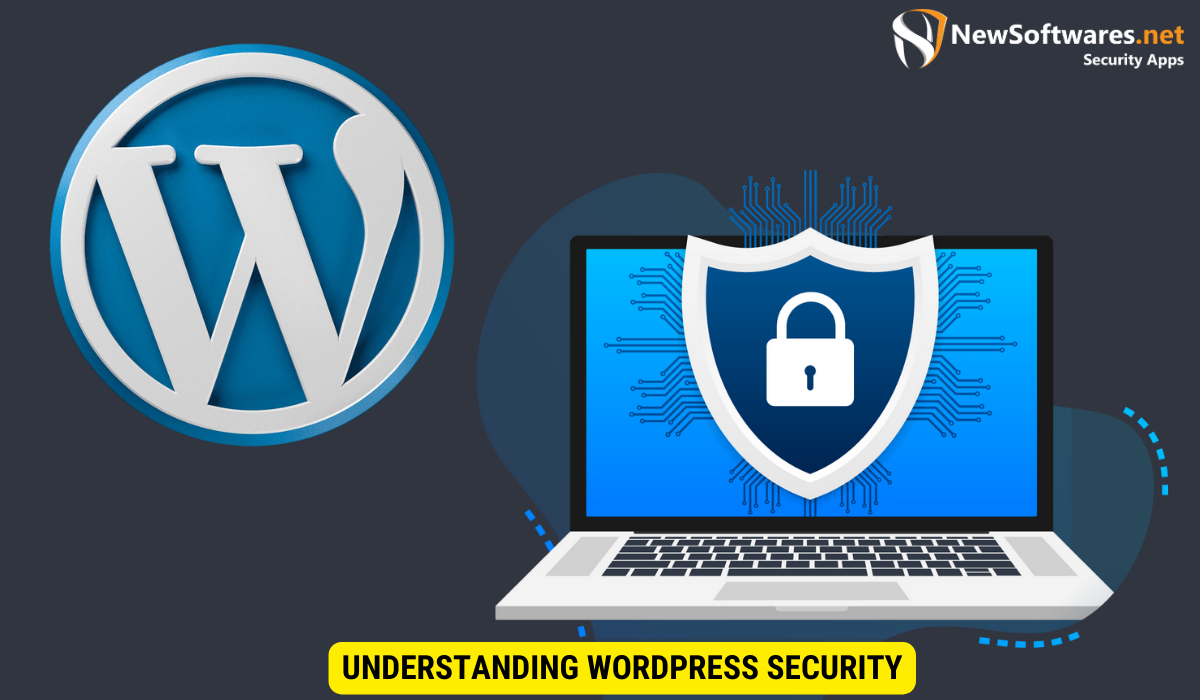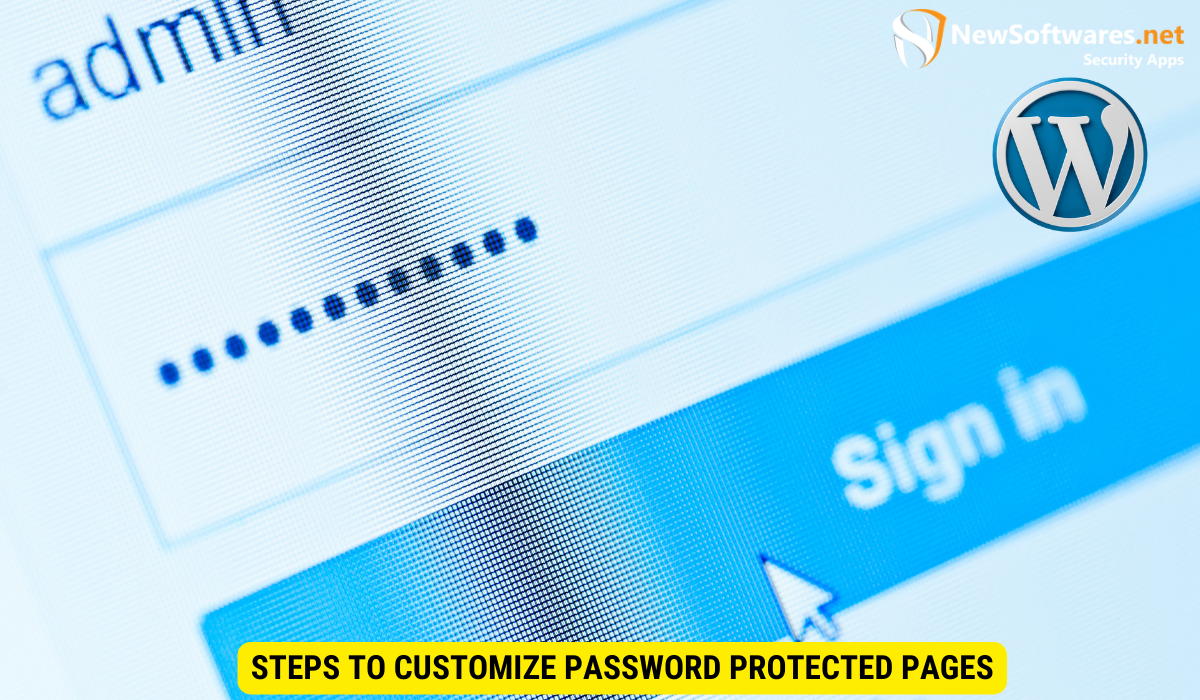Customizing password protected pages in WordPress enhances website security, controls content access, and requires regular maintenance for optimum protection.
In the ever-evolving world of website security, it is crucial for WordPress users to understand the importance of protecting their valuable content. One popular method of securing sensitive information is by utilizing password protected pages. These pages allow you to control access to specific content, ensuring that only authorized visitors can view it. Together, we will delve into the topic of customizing password protected pages in WordPress, exploring the different aspects of security and offering practical solutions for customization.
Understanding WordPress Security

Importance of Password Protection in WordPress
When it comes to managing a WordPress website, there is a plethora of potential security risks that need to be taken into consideration. Unauthorized access to sensitive information can result in data breaches and compromised user accounts, leading to reputational damage and potential legal implications. By implementing password protection, you add an extra layer of security to your content, helping to safeguard your website and the information it holds.
One crucial aspect of password protection is the use of two-factor authentication. This additional security measure requires users to provide two forms of identification before accessing the website, making it significantly harder for unauthorized individuals to breach the system. By enabling two-factor authentication, you enhance the security of your WordPress site and reduce the likelihood of unauthorized access.
Basic Concepts of WordPress Security
Before exploring the intricacies of password protected pages, it’s essential to establish a solid foundation of basic WordPress security. This includes keeping your WordPress installation and plugins up to date, choosing strong passwords, and regularly backing up your website. By adopting these practices, you minimize the risk of security breaches and provide a secure environment for your password protected pages.
Another fundamental aspect of WordPress security is the implementation of security plugins. These tools offer additional layers of protection by monitoring for suspicious activity, blocking malicious login attempts, and scanning for potential vulnerabilities. Popular security plugins such as Wordfence and Sucuri provide comprehensive security features that help fortify your website against various cyber threats. Integrating security plugins into your WordPress site enhances its overall security posture and protects your password protected pages from potential attacks.
Introduction to Password Protected Pages
What are Password Protected Pages?
Password protected pages offer a straightforward method of controlling access to specific content on your WordPress website. When you enable password protection for a page, visitors must enter the correct password to gain access. This allows you to limit the audience for certain content, providing exclusivity and ensuring that only authorized users can view it.
Benefits of Using Password Protected Pages
There are several benefits to utilizing password protected pages in WordPress. Firstly, it offers a convenient way to share sensitive information with specific individuals or groups. Whether you are a business sharing confidential documents with clients or a teacher providing resources to students, password protected pages allow you to control who has access to your content.
Secondly, password protected pages can be used to create private sections of your website, such as member-only areas or exclusive content for specific user groups. By restricting access to these pages, you can provide value to your audience and foster a sense of community.
Lastly, password protected pages give you the flexibility to publish time-sensitive content that should only be accessible for a limited period. This can include promotional offers, exclusive announcements, or time-restricted materials, allowing you to create a sense of urgency and exclusivity for your audience.
Steps to Customize Password Protected Pages

Setting Up Password Protected Pages
Customizing password protected pages begins with setting them up correctly. In WordPress, this can be done easily by navigating to the desired page’s editor and locating the “Visibility” settings. By selecting the “Password protected” option, you can enable password protection for that particular page.
Additionally, you can set a unique password that visitors must enter to access the page. It is recommended to choose a strong password to enhance security. Remember to save your changes after configuring the visibility settings.
Customizing the Password Entry Form
While the default password entry form in WordPress is functional, you have the option to customize its appearance and user experience. With the help of plugins or coding techniques, you can modify the form to align with your website’s design and branding.
Plugins like “Password Protected” or “Custom Login Page Customizer” offer pre-built templates and customization options, allowing you to create a cohesive and visually pleasing password entry form. Alternatively, if you are comfortable with coding, you can access the WordPress theme files and modify the form using HTML, CSS, and PHP.
Advanced Customization Techniques
Using Plugins for Advanced Customization
WordPress offers a wide range of plugins that can enhance the customization options for your password protected pages. These plugins allow you to add features like multiple passwords, password expiration, user roles, and more. By leveraging these plugins, you can create unique and tailored experiences for your visitors.
Coding Techniques for Customization
If you have coding knowledge or are willing to learn, you can take customization to the next level by utilizing coding techniques. This includes modifying the password protection functionality, adding custom fields to the password form, or implementing additional security measures. However, it is crucial to exercise caution when modifying code and take necessary precautions to avoid breaking your website.
Maintaining Security of Password Protected Pages
Regular Updates and Maintenance
Just like any other aspect of your WordPress website, password protected pages require regular updates and maintenance to ensure optimum security. This involves keeping both your WordPress core files and plugins up to date, as developers frequently release security patches and bug fixes. By maintaining an updated website, you mitigate potential vulnerabilities and enhance the overall security of your password protected pages.
Common Security Threats and How to Avoid Them
As with any online platform, WordPress is not immune to security threats. It is essential to stay informed about common security threats and take proactive measures to avoid them. Some typical threats include brute force attacks, weak passwords, and outdated plugins. By implementing strong passwords, limiting login attempts, and regularly reviewing your website’s security practices, you can significantly reduce the risk of security breaches.
Key Takeaways
- Password protected pages in WordPress allow you to control access to specific content, protecting valuable information.
- Strong basic WordPress security practices, such as regular updates and strong passwords, are essential foundations for password protected pages.
- Password protected pages offer benefits such as sharing confidential information, creating exclusive member-only areas, and publishing time-sensitive content.
- Customizing password protected pages involves setting them up correctly and customizing the password entry form using plugins or coding techniques.
- Maintaining security of password protected pages requires regular updates, maintenance, and awareness of common security threats.
FAQs:
Can I customize the appearance of the password entry form?
Yes, you can customize the password entry form in WordPress by utilizing plugins or coding techniques. Plugins like “Password Protected” offer pre-built templates, while coding allows for more extensive customization.
Can I have multiple passwords for a password protected page?
Yes, with the help of plugins, you can assign multiple passwords to a password protected page. This allows you to provide access to different individuals or groups using unique passwords.
How often should I update my password protected pages?
Regular updates are crucial for maintaining the security of your password protected pages. It is recommended to follow a routine maintenance schedule and update your WordPress core files and plugins whenever new updates are available.
Are password protected pages completely secure?
Password protected pages add an extra layer of security to your content, but no security measure is completely foolproof. It is important to adopt additional security practices, such as strong passwords and regular security audits, to ensure maximum protection.
Can I use coding techniques to enhance security?
Yes, coding techniques can be utilized to enhance the security of your password protected pages. However, it is crucial to have a solid understanding of coding and exercise caution when modifying code to avoid unintended consequences.
Conclusion
In conclusion, customizing password protected pages in WordPress is a crucial step for any website owner who values security and wants to control access to their content. By understanding the basic concepts of WordPress security, utilizing plugins or coding techniques, and implementing regular updates and maintenance, you can create a secure and exclusive experience for your audience. Take charge of your WordPress website’s security today and protect your valuable content with password protected pages.
